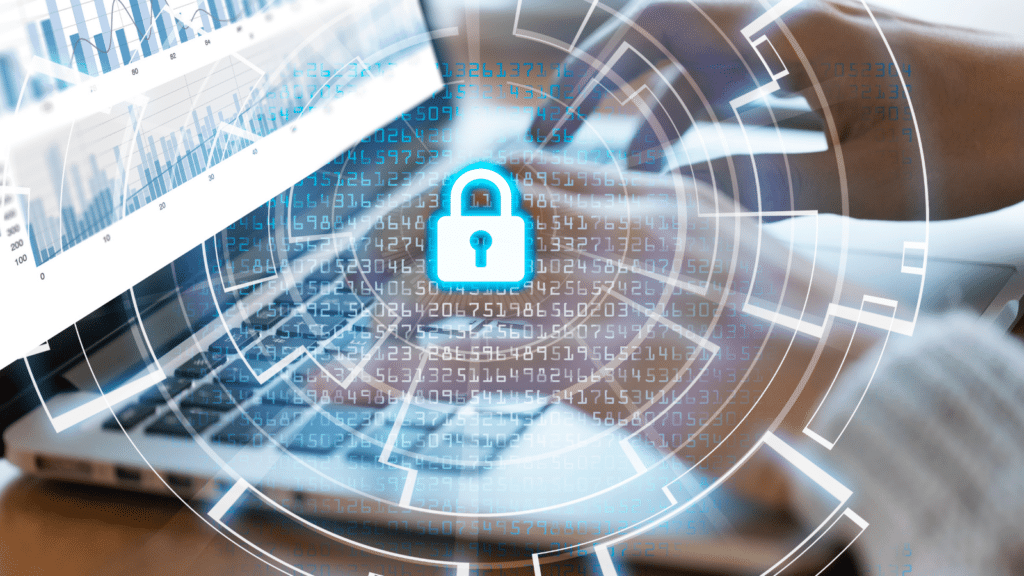Digital transformation and cybersecurity

Why are digital transformation and cybersecurity in business inseparable?
The digital transformation of companies has accelerated in recent years. Initiated and developed by technological advances (Big Data, Cloud, connected objects), it has increased with the COVID-19 pandemic and its restrictions. Even SMEs, hitherto lagging behind, are now measuring the importance of digitalization. Nevertheless, the development of digital transformation is accompanied by new security vulnerabilities. This is why the implementation of concrete cybersecurity measures in companies is essential.
The objectives of the digital transformation of companies
The digital transformation of society is transforming productivity and business performance. It offers prospects of flexibility, autonomy and innovation. At the same time, digital transformation is optimizing organizational methods.
In a context of globalization, where a company must stand out in an ultra-competitive market, digital transformation becomes an essential vector. It is associated with new technologies to guarantee better cooperation between employees: Cloud, artificial intelligence, Big Data, communication applications, data management, connected objects, etc.
Digital business transformation: many benefits
Digital transformation impacts the evolution of a company in a positive way. It is measured on several levels.
1. It automates certain repetitive tasks, hitherto performed by collaborators.
2. As a result, digital transformation allows them to focus on other tasks. It improves their performance.
3. Digital transformation centralizes IT data.
4. It helps to save time in the execution of certain tasks.
5. Digital transformation develops prospecting solutions, sales and online experience for the customer.
6. It facilitates telework for employees, with easier access to company databases.
7. Digital transformation increases business productivity.
However, this evolution is not without constraints, with the arrival of new computer threats.
Cybercrime in connection with digital transformation
Companies that want to quickly operate a digital transformation expose themselves to real cybercriminal threats. Indeed, the level of computer protection of companies generally remains insufficient in the face of the explosion of cybercrime. A study, conducted in 2016 by Deloitte, already pointed to the paradox: 58% of companies considered digital transformation to be a priority objective, just behind financial results (61%). At the same time, only 12% of them placed cybersecurity in their three main challenges.
The many faces of cybercrime
The lack of correlation between digital transition and cybersecurity in companies has amplified the risks of cybercrime. They take different forms:
- ransomware, or ransomware;
- Internet fraud (identity theft);
- theft of sensitive data;
- intrusion into the computer system;
- spying ;
- various destabilizations (sabotage, damage to image, etc.);
- disinformation ;
- etc
The number of cyberattacks has quadrupled between 2019 and 2020, according to ANSSI (National Agency for Information Systems Security). All organizations are likely to be affected by a cyberattack: large companies, SMEs, VSEs, local authorities. Similarly, all sectors are targeted, from health to transport, including logistics.
Digital transformation in business: vulnerable areas
Companies are showing signs of vulnerability in several areas of the digital transition.
On the one hand, access to company data and resources from anywhere represents a major risk for sensitive data theft. This phenomenon has been gaining momentum since the start of the health crisis and the democratization of teleworking. The use of personal computer equipment, which is less well protected than the professional computer system, increases the risk of intrusion into company data. On the other hand, the lack of personnel specialized in cybersecurity, as well as the absence of good employee reflexes, facilitate computer attacks.
In general, computer attacks are modernized at the same time as technological advances. Document sharing services in the Cloud (OneDrive, Dropbox), connected objects, sensors, connected cars, robots present new flaws, in which cybercriminals rush. Not to mention the arrival of 5G and, in the more distant future, the transition to the quantum age.
Cybersecurity, a market with insufficient growth
In France, 25% of companies were affected by a ransomware attack in 2020 according to Cesin, an association of French IT security managers. The explosion of cyberattacks forces them to better protect themselves. Thus, the cybersecurity market is growing rapidly. However, the overall effort remains insufficient, notes a study published in 2022 by Wavestone.
Today, cybersecurity represents 6.1% of the IT budget of large French companies and organizations. This figure falls within the recommended range of 5-10% of the IT budget. On the side of SMEs, the delay in terms of cybersecurity remains, on the other hand, worrying. The study also reveals the insufficient number of staff dedicated to cybersecurity: less than 1 specialized person for 1,500.
The level of cyber maturity of large French organizations only reaches 46%.
Cybersecurity, the only bulwark to respond to computer threats
A digital transformation is only successful if security issues are integrated from the design stages of the project. Cybersecurity solutions are thus proving to be commensurate with the needs of the company in terms of IT security. In addition, the company has every interest in regularly evaluating the reliability of the defense systems. To do this, it can carry out intrusion tests, server configuration audits, system vulnerability scans, etc. Other solutions are just as important to put in place to respond to cybercrime.
Secure remote access with a VPN
The explosion of telework forces companies to set up a remote access system to the information system (IS). However, opening the IS from the outside can present security flaws if protection systems are not deployed:
- employee authentication;
- implementation of access rules;
- communications protection.
The use of a VPN (Virtual Private Network) makes it possible to create a direct link between remote computers, while isolating the traffic. The tool is also recommendable for securing access to cloud computing structures.
Better protect data from computer terminals
Teleworking and the mobility of employees make the protection of professional terminals (PCs, tablets, smartphones) obsolete. No longer sheltered by a traditional firewall, terminals require effective data encryption.
Also called data encryption, encryption prevents data theft or loss. Understanding the file remains impossible for anyone without a decryption key. This method comes in addition to setting up a VPN (Virtual Private Network).
In addition to data encryption, it is possible to use software to move sensitive files into a container that is also encrypted.
Securing connected objects with “zero trust”
New connected objects represent the pillars of digital transformation. They improve the security of buildings (surveillance cameras), help employees in their tasks (connected vehicles, tools). Their rapid development nevertheless raises some questions about the level of IoT (Internet of Things) security.
The principle of “zero trust” prevents these connected objects from turning against their owner. The goal is to isolate each component from the rest of the information system by using filtering. This segmentation makes it possible to control each connection between components or with the Internet and to authorize only certain specific actions.
Train staff in cybersecurity
If large companies must invest as soon as possible in an IT system security department, SMEs and VSEs must rely on the vigilance of their employees. Certain habits can significantly reduce the risk of cyberattacks:
- use secure passwords;
- keep login credentials confidential;
- lock transfers each time you leave the workstation;
- update operating systems;
- learn to spot intrusion attempts, fraudulent messages;
- use two-factor authentication.
Companies must be accompanied in the implementation of their strategy for securing information systems. For employees, following cybersecurity training helps limit the risks of cybercrime.
Continue reading

Cybersecurity Promotion Program

What is Cybermonth?

